Instruction
A Guide to Golf Fitness for Teens
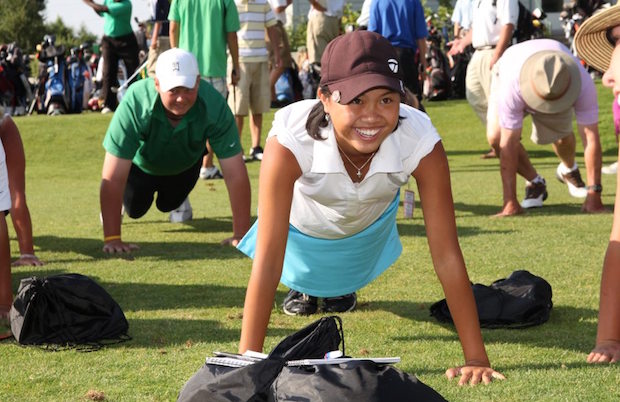
In this series of five articles, I will be offering guidelines for golf-specific physical activity aimed at five different golfing demographics:
This article covers the physical activity that’s best for teens interested in the game of golf, a period in which many changes start happening in the body. Hormones go crazy, which normally leads to growth spurts, acne and unpredictable mood swings amongst a whole host of other adaptations.
A teen’s body often feels strange, ungainly and uncomfortable to live in. Combine this self consciousness with a lifestyle that is increasingly centered around computers, phones and school work, and the solid upright posture that was demonstrated during their preteen years can rapidly disappear.
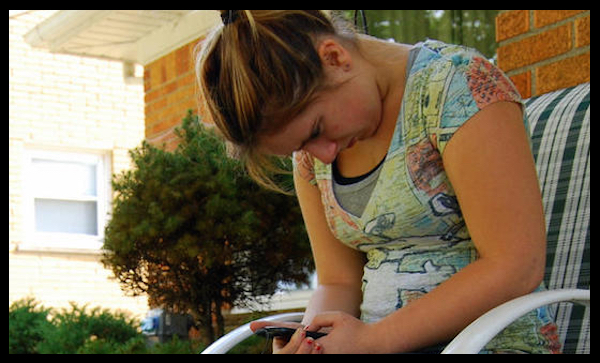
The increasing use of mobile phones is slowly dragging the posture of teenages forward, in and down.
As trainers and golf coaches, we like to see good posture not only from a golf swing mechanics point of view, but also to ensure proper functional movement of the spine and the major joints in the body. A sloppy standing and seated posture will almost always be reflected in a golf swing with funky compensatory movements and poor control in basic gym exercises.
The first stop for any young teen who comes into either our golf academy or Australian state program is a postural analysis, followed by education and prescription of corrective exercises. It might not be glamorous or particularly fun at first, but we consider it absolutely essential for future development.
Once some postural education has been carried out, we move on to the basic gym exercises: push, pull, squat, lunge and brace. We prescribe an even balance of these exercises to ensure equal development and good awareness and control of the body in movement.
At first, these exercises use just bodyweight or very light loads, and almost always come with a high volume of repetitions. As mentioned before, the body is still growing throughout this period and it isn’t advised to repeatedly load the skeleton with heavy weight. The objective at this point is not to build a muscle-bound freak who pounds the ball 300 yards. We are still very much in the phase of developing a well-rounded athlete who has great body awareness, control and resilience to injury. We also recommend continuing to play other sports, as this will help develop coordination, joint stability and cardio-vascular fitness.
Neglecting the pillars of physical development — postural awareness, an introduction to the gym and participation in sports outside of golf — can lead to some worrying adaptations. “Reverse upper spine” and “crunch factor” are two fairly gruesome-sounding movements that we see leave their mark on the bodies of teen golfers on a regular basis. They are both attributed to poor body awareness and/or lack of strength when swinging the golf club. Lateral curvatures in the spine and injured shoulders and wrists are all too frequently the result.

A teenager displaying an adaptive shortening of the muscles in the right side of the body from hitting too many practice balls.
The best practice is to see a good, golf-specific trainer or physio in your area who can set you down the right path. In the mean time, click on the image below to get access to a basic bodyweight posture and functional movement program that will get you started.
Exercise guides for this program are available on the Golf Fit Pro app. Check out the app and a host of other golf fitness programs, products and services here: www.golffitproshop.com
- LIKE16
- LEGIT2
- WOW2
- LOL0
- IDHT0
- FLOP4
- OB0
- SHANK4
Instruction
The Wedge Guy: The easiest-to-learn golf basic

My golf learning began with this simple fact – if you don’t have a fundamentally sound hold on the golf club, it is practically impossible for your body to execute a fundamentally sound golf swing. I’m still a big believer that the golf swing is much easier to execute if you begin with the proper hold on the club.
As you might imagine, I come into contact with hundreds of golfers of all skill levels. And it is very rare to see a good player with a bad hold on the golf club. There are some exceptions, for sure, but they are very few and very far between, and they typically have beat so many balls with their poor grip that they’ve found a way to work around it.
The reality of biophysics is that the body moves only in certain ways – and the particulars of the way you hold the golf club can totally prevent a sound swing motion that allows the club to release properly through the impact zone. The wonderful thing is that anyone can learn how to put a fundamentally sound hold on the golf club, and you can practice it anywhere your hands are not otherwise engaged, like watching TV or just sitting and relaxing.
Whether you prefer an overlap, interlock or full-finger (not baseball!) grip on the club, the same fundamentals apply. Here are the major grip faults I see most often, in the order of the frequency:
Mis-aligned hands
By this I mean that the palms of the two hands are not parallel to each other. Too many golfers have a weak left hand and strong right, or vice versa. The easiest way to learn how to hold the club with your palms aligned properly is to grip a plain wooden ruler or yardstick. It forces the hands to align properly and shows you how that feels. If you grip and re-grip a yardstick several times, then grip a club, you’ll see that the learning curve is almost immediate.
The position of the grip in the upper/left hand
I also observe many golfers who have the butt of the grip too far into the heel pad of the upper hand (the left hand for right-handed players). It’s amazing how much easier it is to release the club through the ball if even 1/4-1/2″ of the butt is beyond the left heel pad. Try this yourself to see what I mean. Swing the club freely with just your left hand and notice the difference in its release from when you hold it at the end of the grip, versus gripping down even a half inch.
To help you really understand how this works, go to the range and hit shots with your five-iron gripped down a full inch to make the club the same length as your seven-iron. You will probably see an amazing shot shape difference, and likely not see as much distance loss as you would expect.
Too much lower (right) hand on the club
It seems like almost all golfers of 8-10 handicap or higher have the club too far into the palm of the lower hand, because that feels “good” if you are trying to control the path of the clubhead to the ball. But the golf swing is not an effort to hit at the ball – it is a swing of the club. The proper hold on the club has the grip underneath the pad at the base of the fingers. This will likely feel “weak” to you — like you cannot control the club like that. EXACTLY. You should not be trying to control the club with your lower/master hand.
Gripping too tightly
Nearly all golfers hold the club too tightly, which tenses up the forearms and prevents a proper release of the club through impact. In order for the club to move back and through properly, you must feel that the club is controlled by the last three fingers of the upper hand, and the middle two fingers of the lower hand. If you engage your thumbs and forefingers in “holding” the club, the result will almost always be a grip that is too tight. Try this for yourself. Hold the club in your upper hand only, and squeeze firmly with just the last three fingers, with the forefinger and thumb off the club entirely. You have good control, but your forearms are not tense. Then begin to squeeze down with your thumb and forefinger and observe the tensing of the entire forearm. This is the way we are made, so the key to preventing tenseness in the arms is to hold the club very lightly with the “pinchers” — the thumbs and forefingers.
So, those are what I believe are the four fundamentals of a good grip. Anyone can learn them in their home or office very quickly. There is no easier way to improve your ball striking consistency and add distance than giving more attention to the way you hold the golf club.
More from the Wedge Guy
- The Wedge Guy: Golf mastery begins with your wedge game
- The Wedge Guy: Why golf is 20 times harder than brain surgery
- The Wedge Guy: Musings on the golf ball rollback
- LIKE85
- LEGIT13
- WOW5
- LOL1
- IDHT0
- FLOP4
- OB1
- SHANK8
Instruction
Clement: Stop ripping off your swing with this drill!

Not the dreaded headcover under the armpit drill! As if your body is defective and can’t function by itself! Have you seen how incredible the human machine is with all the incredible feats of agility all kinds of athletes are accomplishing? You think your body is so defective (the good Lord is laughing his head off at you) that it needs a headcover tucked under the armpit so you can swing like T-Rex?
- LIKE0
- LEGIT2
- WOW2
- LOL0
- IDHT0
- FLOP0
- OB0
- SHANK2
Instruction
How a towel can fix your golf swing

This is a classic drill that has been used for decades. However, the world of marketed training aids has grown so much during that time that this simple practice has been virtually forgotten. Because why teach people how to play golf using everyday items when you can create and sell a product that reinforces the same thing? Nevertheless, I am here to give you helpful advice without running to the nearest Edwin Watts or adding something to your Amazon cart.
For the “scoring clubs,” having a solid connection between the arms and body during the swing, especially through impact, is paramount to creating long-lasting consistency. And keeping that connection throughout the swing helps rotate the shoulders more to generate more power to help you hit it farther. So, how does this drill work, and what will your game benefit from it? Well, let’s get into it.
Setup
You can use this for basic chip shots up to complete swings. I use this with every club in my bag, up to a 9 or 8-iron. It’s natural to create incrementally more separation between the arms and body as you progress up the set. So doing this with a high iron or a wood is not recommended.
While you set up to hit a ball, simply tuck the towel underneath both armpits. The length of the towel will determine how tight it will be across your chest but don’t make it so loose that it gets in the way of your vision. After both sides are tucked, make some focused swings, keeping both arms firmly connected to the body during the backswing and follow through. (Note: It’s normal to lose connection on your lead arm during your finishing pose.) When you’re ready, put a ball in the way of those swings and get to work.

Get a Better Shoulder Turn
Many of us struggle to have proper shoulder rotation in our golf swing, especially during long layoffs. Making a swing that is all arms and no shoulders is a surefire way to have less control with wedges and less distance with full swings. Notice how I can get in a similar-looking position in both 60° wedge photos. However, one is weak and uncontrollable, while the other is strong and connected. One allows me to use my larger muscles to create my swing, and one doesn’t. The follow-through is another critical point where having a good connection, as well as solid shoulder rotation, is a must. This drill is great for those who tend to have a “chicken wing” form in their lead arm, which happens when it becomes separated from the body through impact.
In full swings, getting your shoulders to rotate in your golf swing is a great way to reinforce proper weight distribution. If your swing is all arms, it’s much harder to get your weight to naturally shift to the inside part of your trail foot in the backswing. Sure, you could make the mistake of “sliding” to get weight on your back foot, but that doesn’t fix the issue. You must turn into your trial leg to generate power. Additionally, look at the difference in separation between my hands and my head in the 8-iron examples. The green picture has more separation and has my hands lower. This will help me lessen my angle of attack and make it easier to hit the inside part of the golf ball, rather than the over-the-top move that the other picture produces.


Stay Better Connected in the Backswing
When you don’t keep everything in your upper body working as one, getting to a good spot at the top of your swing is very hard to do. It would take impeccable timing along with great hand-eye coordination to hit quality shots with any sort of regularity if the arms are working separately from the body.
Notice in the red pictures of both my 60-degree wedge and 8-iron how high my hands are and the fact you can clearly see my shoulder through the gap in my arms. That has happened because the right arm, just above my elbow, has become totally disconnected from my body. That separation causes me to lift my hands as well as lose some of the extension in my left arm. This has been corrected in the green pictures by using this drill to reinforce that connection. It will also make you focus on keeping the lead arm close to your body as well. Because the moment either one loses that relationship, the towel falls.


Conclusion
I have been diligent this year in finding a few drills that target some of the issues that plague my golf game; either by simply forgetting fundamental things or by coming to terms with the faults that have bitten me my whole career. I have found that having a few drills to fall back on to reinforce certain feelings helps me find my game a little easier, and the “towel drill” is most definitely one of them.
- LIKE12
- LEGIT2
- WOW2
- LOL0
- IDHT0
- FLOP2
- OB0
- SHANK8
-

 19th Hole6 days ago
19th Hole6 days agoDave Portnoy places monstrous outright bet for the 2024 Masters
-

 19th Hole2 weeks ago
19th Hole2 weeks agoThings got heated at the Houston Open between Tony Finau and Alejandro Tosti. Here’s why
-

 19th Hole7 days ago
19th Hole7 days agoTiger Woods arrives at 2024 Masters equipped with a putter that may surprise you
-

 19th Hole2 weeks ago
19th Hole2 weeks agoReport: Tiger Woods has ‘eliminated sex’ in preparation for the 2024 Masters
-

 19th Hole1 day ago
19th Hole1 day agoTwo star names reportedly blanked Jon Rahm all week at the Masters
-

 19th Hole2 weeks ago
19th Hole2 weeks agoAddiction, spinal fusion, and scam artists – Everything Anthony Kim revealed in candid interview with David Feherty
-

 19th Hole2 weeks ago
19th Hole2 weeks agoAnthony Kim says doctors told him that he ‘may not have much time left’ ahead of LIV return
-

 19th Hole20 hours ago
19th Hole20 hours agoNeal Shipley presser ends in awkward fashion after reporter claims Tiger handed him note on 8th fairway

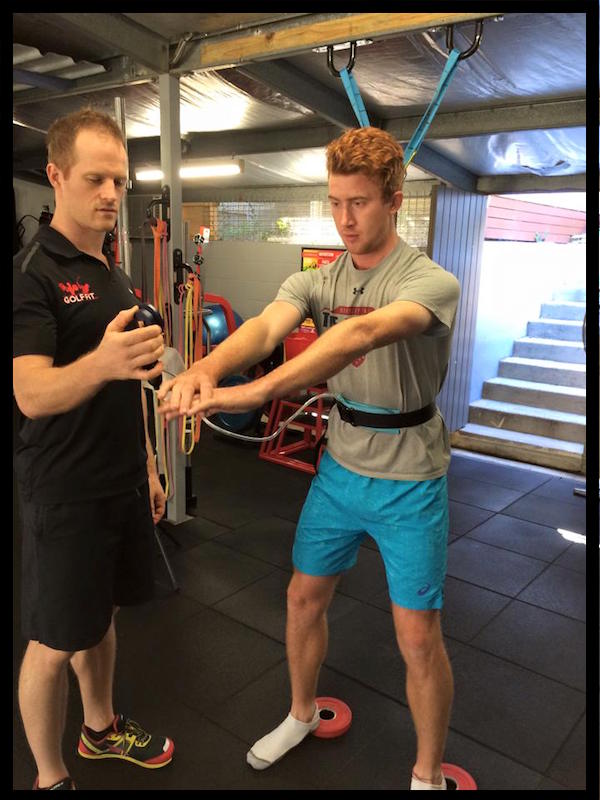
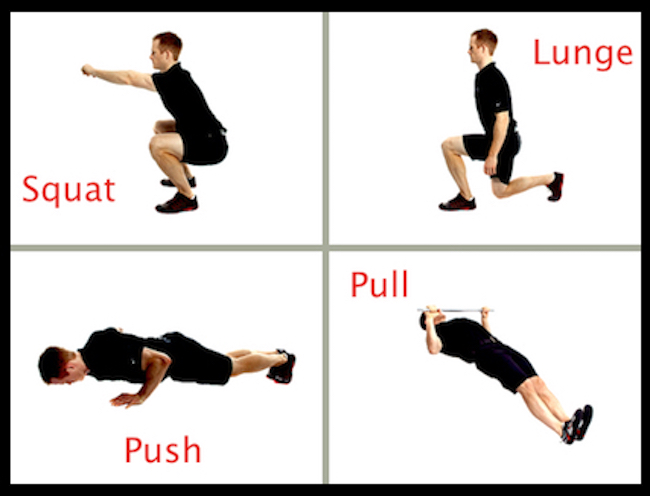
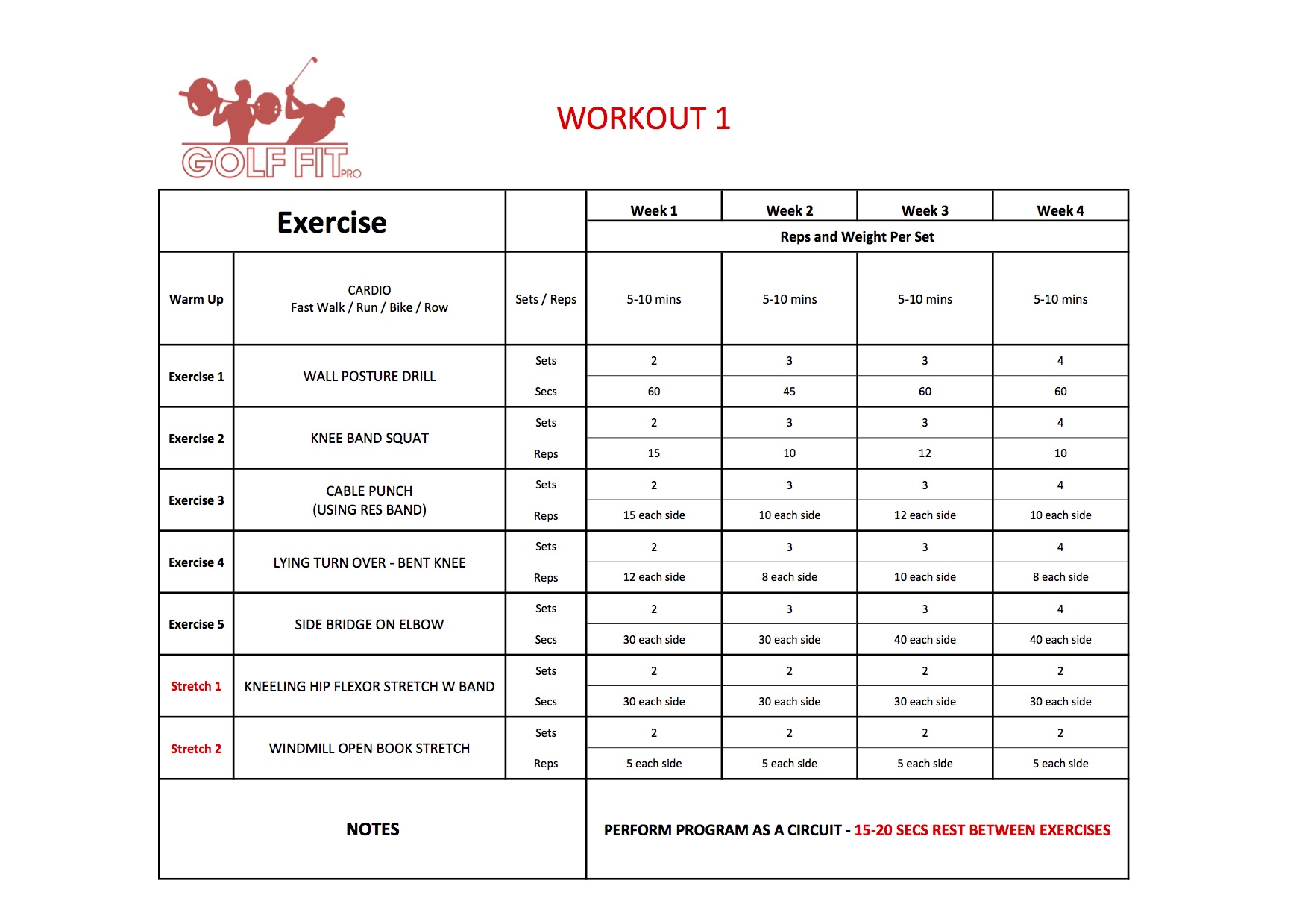

















Ball
Jun 5, 2015 at 1:11 pm
The last pic of the boy’s right shoulder dip:
That’s a perfect body for golf! Why are you criticizing it? He’s built himself to get to that place! Don’t ruin it by trying to balance it back! He’s a golfer! This is what happens, and how you want it to be.
Eh
Jun 5, 2015 at 9:06 pm
Actually, repeated use of a single side of the body can result in injuries due to the drastic strength gap between the two halves in the long run.
TR1PTIK
Jun 5, 2015 at 11:58 pm
I really hope you’re kidding. There is nothing healthy about a posture that is so out of whack. You may think that it’s the perfect body for golf and something to strive for, but I guarantee that anyone who fails to address muscular and skeletal issues such as those depicted will have their golfing careers cut short.
You seem to be very naïve and uneducated on the subject so please refrain from posting such ridiculous comments in the future.
Ball
Jun 5, 2015 at 1:09 pm
First pic:
He had a really good view, didn’t he?